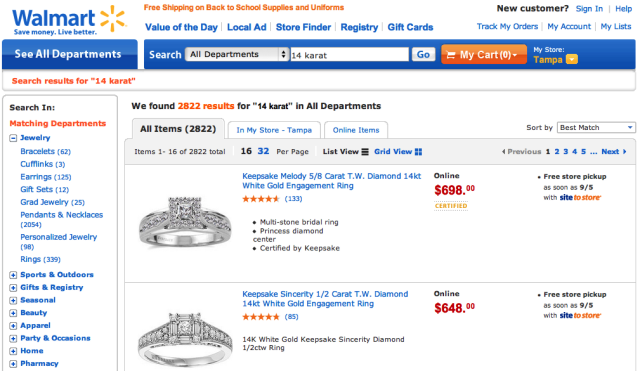Semantic Search Engine Polaris uses Pinterest Data
A semantic search engine named “Polaris” powers Walmart.com, as well as the company’s mobile web and mobile apps, and it has a 10%-15% increased likelihood that a customer will complete their purchase.
Walmart has struggled in the past to compete against Amazon.com when it comes to Internet sales. But this giant is serious about e-commerce and m-commerce.
The semantic search engine was built by a small team of fifteen engineers within Walmart’s @WalmartLabs division, an internal group of technologists which grew through the acquisition of startups like Kosmix, OneRiot, Grabble, Small Society, and others.
Social Genome Semantic Search Engine Technology
Polaris takes advantage of Kosmix’s semantic technology, which includes something it once called the “Social Genome” – a way of enabling discovery using algorithms that rank results via social signals from around the web.
Kosmix’s Social Genome technology was used in an earlier @WalmartLabs creation known as “Shopycat,” a social-gifting platform that debuted just before the 2011 holiday season as a Facebook application. With Polaris, that same technology has been expanded upon in order to help return better search results on Walmart.com’s e-commerce and m-commerce destinations. Algorithms take into consideration the number of “Likes” a Walmart product it has on Facebook, and at the number of pins it has on Pinterest, as well as user ratings and reviews when ranking results. Reviews are sourced from Walmart itself, but further down the road, Polaris may pull in reviews from external properties through partnerships with review providers.
It’s a notable development for Walmart to consider using the “signals” from Pinterest which was young and often seen to drive traffic, but, at the same time, increasingly questioned on its ability to convert clicks to sales back in 2011. Making this Semantic Search Engine and Walmart pretty much visionaries in the field at a time where even Zappos failed at increasing revenues with its Pinpointing tool, a website feature which suggested products based on Pinterest Board Pinned content.
In addition to social signals, Polaris focused on the semantic technology Kosmix had developed as a part of the Social Genome. This allows Polaris to understand and analyze the relationship between people, events, places, and products.
This means that when a user searches for “garden furniture” on Walmart.com, the semantic search engine knows the search is for the category “patio furniture,” and displays results from that product group. It also helps to categorize product descriptions in order to extract more meaning out of the text provided. For example, it can pull out “14 Karat” into an attribute from a description of a gold necklace, and then that attribute becomes searchable.

14 karat search on Walmart with Polaris the Semantic Search Engine Technology – Image Credit: TechCrunch
Walmart Engagement Scoring
The third key piece to Polaris is what Walmart calls “engagement scoring.” This was designed in-house using Walmart’s own internal metrics. The scoring uses and measures Walmart shoppers actually do following a search: what they click on, add to cart, and what they purchase. This trains the system to know that a customer searching for “house” is more likely looking for something related to the TV show “House,” as opposed to “dog house” or “doll house,” for example, or that the word “flats” shouldn’t have the “s” removed in order to return results about “flat screen TVs” but should rather present a selection of shoes.
Brazil, the first country in the international roll-out
The rollout of the semantic search engine originally began with a small bucket test where small portions (5%-10%) of Walmart.com traffic was directed over to the next engine. Now the engine is live on all Walmart’s e-commerce and m-commerce offerings in the U.S. The metric related to the increased purchase likelihood (the 10%-15% increase reported above) was made after rollout was at 100%.











Trackbacks & Pingbacks
[…] January 2012, you have heard me rant and rave about Pinterest. I believe that Pinterest is NOT a social platform. It never was. I will recap now the reasons why […]
Leave a Reply
Want to join the discussion?Feel free to contribute!